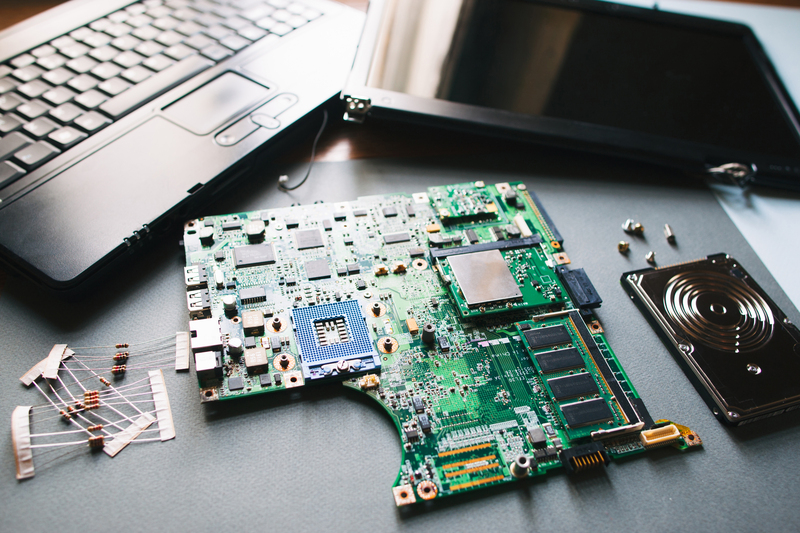Learn Which Plastics Are Best to Avoid in Your Home
Plastics are everywhere--packaging our food, storing our leftovers, or even used in our furniture and children's toys. Yet, not all plastics are created equal. Some pose significant health and environmental risks and should ideally be minimized or eliminated from your home. This article explores which plastics to avoid in your home, why these types are concerning, and what safer, sustainable alternatives you can turn to for a healthier household.
Understanding Plastic Identification Codes
Before we dive deep into which plastics are best avoided at home, it's crucial to familiarize yourself with the plastic identification codes, often seen as numbers (1-7) within a triangle of arrows on the bottom of containers. These Resin Identification Codes aren't just for recycling--they indicate the type of plastic used, and each has its own characteristics and risks.
- 1 - PET (Polyethylene Terephthalate): Commonly used in water and soda bottles.
- 2 - HDPE (High-Density Polyethylene): Found in milk jugs, detergent bottles.
- 3 - PVC (Polyvinyl Chloride): Used in cling wraps, pipes, toys.
- 4 - LDPE (Low-Density Polyethylene): Used for bread bags, squeezable bottles, plastic wraps.
- 5 - PP (Polypropylene): Found in yogurt containers, straws, medicine bottles.
- 6 - PS (Polystyrene): Used for disposable cups, plates, take-out containers.
- 7 - Other (includes Polycarbonate & BPA): Found in sports bottles, some food containers, baby bottles.

Top Plastics to Avoid at Home
1. Polyvinyl Chloride (PVC, #3)
PVC is often labeled as "poison plastic" for a reason. Found in products like pipes, shower curtains, vinyl flooring, and even some food wraps and toys, PVC contains potentially harmful additives such as phthalates and lead. These chemicals can leach out and have been linked to hormonal disruption, reproductive issues, and developmental problems in children.
- Why Avoid: Contains toxic chemicals, not easily recyclable, associated with harmful dioxins when manufactured or burned.
- Health Concerns: Endocrine disruption, carcinogenic effects, possible neurotoxic impacts on children.
- Typical Products: Food packaging, shower curtains, garden hoses, some toys, plastic wraps.
2. Polystyrene (PS, #6)
If you've ever held a styrofoam cup, you're familiar with polystyrene (PS or #6). Used in disposable plates, coffee cups, takeout boxes, and packing peanuts, polystyrene is lightweight but poses big problems. When heated (like microwaving takeout), it can release styrene, a possible human carcinogen. Furthermore, PS is one of the least recycled and most polluting plastics.
- Why Avoid: Leaches styrene especially when heated, very difficult to recycle, breaks down into environmental microplastics.
- Health Concerns: Potential nervous system effects, kidney and liver problems, possible carcinogen.
- Typical Products: Disposable tableware, packing materials, egg cartons, takeout boxes.
3. Polycarbonate & BPA-Containing Plastics (#7 "Other")
The #7 code is a catch-all for various plastics, including polycarbonates that contain Bisphenol A (BPA). BPA is a well-known disruptor of human hormones and has been linked to a wide range of health concerns, from increased cancer risk to behavioral problems in children. While many food containers and water bottles have shifted to "BPA-free" options, some replacement chemicals (like BPS) may pose similar risks.
- Why Avoid: Can leach BPA or other bisphenol chemicals, especially when heated or scratched.
- Health Concerns: Endocrine disruption, obesity, heart disease, developmental effects in infants and children.
- Typical Products: Hard plastic water bottles, baby bottles (older), food storage containers, can linings, electronics.
4. Cling Plastics and Single-Use Packaging (often LDPE #4 or mixed plastics)
Not all #4 plastics are of equal concern, but cling wraps and single-use wrappers are problematic due to both chemical and environmental reasons. They may contain softeners or other additives that migrate into foods, especially fatty or acidic ones. These are also rarely recycled and contribute greatly to environmental plastic pollution.
- Why Avoid: Possible leaching of plasticizers, heavy pollution footprint. Not consistently recyclable.
- Health Concerns: Potential chemical exposure, particularly when heating or wrapping fatty foods or cheese.
- Typical Products: Sandwich bags, plastic film wraps, bread bags, snack wrappers.
Why Should You Avoid These Types of Plastics?
Eliminating or reducing hazardous plastics in your home has two key benefits:
- Protecting Your Family's Health: Toxic chemicals in certain plastics may leach into food, drinks, or even the dust in your home, increasing the risk of health issues such as hormone disruption, cancer, developmental problems in children, and allergies.
- Reducing Environmental Impact: The plastics listed above are among the hardest to recycle and most likely to persist in the environment, breaking down into harmful microplastics that impact wildlife and enter our food chain.
Common Household Products with Plastics to Avoid
Here's an overview of everyday items in which concerning plastics are often found:
- Food Storage: Plastic cling wrap, takeout boxes, microwavable containers, and certain water bottles
- Children's Toys: Cheaper, flexible toys often made from PVC
- Kitchenware: Disposable plates, cups, utensils made from polystyrene
- Cosmetic Packaging: Some bottles, caps, and tubes, especially in flexible packaging
- Home Furnishings: Vinyl flooring, shower curtains, cheap furniture upholstery
- Electronics: Casings and wires may use PVC or brominated flame-retardant plastics
Make a habit of checking the bottom of products for the resin code and choosing safer alternatives whenever possible!
Better Alternatives: Safer Plastics and Beyond
Not all plastics are equally hazardous. Some are considered much safer for home use, especially when contact with food or children is involved.
Plastics Considered Safer for Home Use
- 1 - PET or PETE (Polyethylene Terephthalate): Used for many beverage bottles and food jars. Intended for single use, but generally does not leach chemicals at normal temperatures.
- 2 - HDPE (High-Density Polyethylene): Used for milk jugs, detergent bottles, juice bottles; highly resistant to leaching and cracking.
- 5 - PP (Polypropylene): Common in yogurt cups, hummus tubs, and some reusable food containers. Microwave safe and less likely to leach.
However, even these plastics should not be exposed to high heat (like microwaving or dishwashing) as repeated heating can cause chemicals to break down and leach into foods.
Non-Plastic Solutions for a Healthier Home
- Glass: Durable, non-reactive, perfect for food storage, cooking, or drinking bottles.
- Stainless steel: Great for water bottles, food containers, and lunchboxes. Won't leach, lasts decades.
- Ceramic or Porcelain: Excellent for cooking and storage. Make sure glazes are free from lead or cadmium.
- Bamboo and Plant-Based Materials: Increasingly popular for utensils and plates, but verify they're free from synthetic plastic binders.
Tips for Reducing Harmful Plastics in Your Home
Here's how you can take proactive steps to minimize plastics to avoid in your home:
- Read Labels: Familiarize yourself with resin codes--save a guide to your phone for reference while shopping.
- Avoid Single-Use Plastics: Switch to reusable shopping bags, water bottles, and food containers made from safer materials.
- Don't Microwave Plastic: Even 'microwave safe' plastic containers may leach chemicals when heated; use glass or ceramic instead.
- Ventilate When Using New Plastics: New plastic products (like shower curtains or furniture) can "off-gas" volatile organic compounds for days or weeks; air out new purchases before use.
- Prioritize Children's Safety: Choose toys, utensils, and bottles for kids that are certified free from PVC, BPA, and phthalates.
- Recycle Properly: When plastics are unavoidable, ensure they're cleaned and recycled according to your local guidelines.

Frequently Asked Questions About Harmful Plastics
Which plastics are most toxic for food storage?
BPA-containing plastics (often labeled #7), PVC (#3), and polystyrene (#6) can leach potentially toxic chemicals, especially when in contact with heat or fatty/acidic foods. Choosing containers made from glass, stainless steel, or safe plastics like HDPE or PP is preferable.
How do I know if a plastic contains BPA?
BPA is most commonly found in strong, clear polycarbonate plastics labeled with #7. Look for "BPA-free" labels, but remember that alternatives like BPS may not be safer. When in doubt, use glass or metal containers.
Are all plastic toys dangerous?
Not all plastic toys are dangerous, but avoid soft/vinyl toys (PVC). Look for certifications stating that toys are free from PVC, BPA, and phthalates. Many reputable brands now prioritize safety and transparency in their manufacturing.
Is it safe to reuse water bottles?
Single-use bottles (often PET #1) should not be reused repeatedly as they can become scratched and harbor bacteria or leach chemicals with repeated use and washing. Opt for reusable bottles made from stainless steel, glass, or safe plastics.
Can microwaving plastic containers increase health risks?
Yes--heating plastics (even those labeled "microwave-safe") can speed up the process of chemical leaching. Use microwave-safe glass or ceramics for heating food instead.
Conclusion: Make Safer Choices for Your Health and Planet
The best plastics to avoid in your home--such as PVC (#3), polystyrene (#6), and BPA-containing plastics (#7)--are linked to significant health and environmental concerns. By learning to identify these plastics and making conscious choices to limit or replace them, you can create a safer, healthier home for your family. Choose safer plastics when you must and prioritize reusable, non-plastic alternatives like glass and stainless steel wherever possible. Every step you take helps protect your loved ones and moves us all toward a healthier planet.
Your next step:
- Review the plastics in your kitchen and bathroom.
- Replace harmful plastics with safer, more sustainable options.
- Spread awareness--share this comprehensive guide with friends and family.
Remember, making informed choices today leads to a healthier tomorrow!